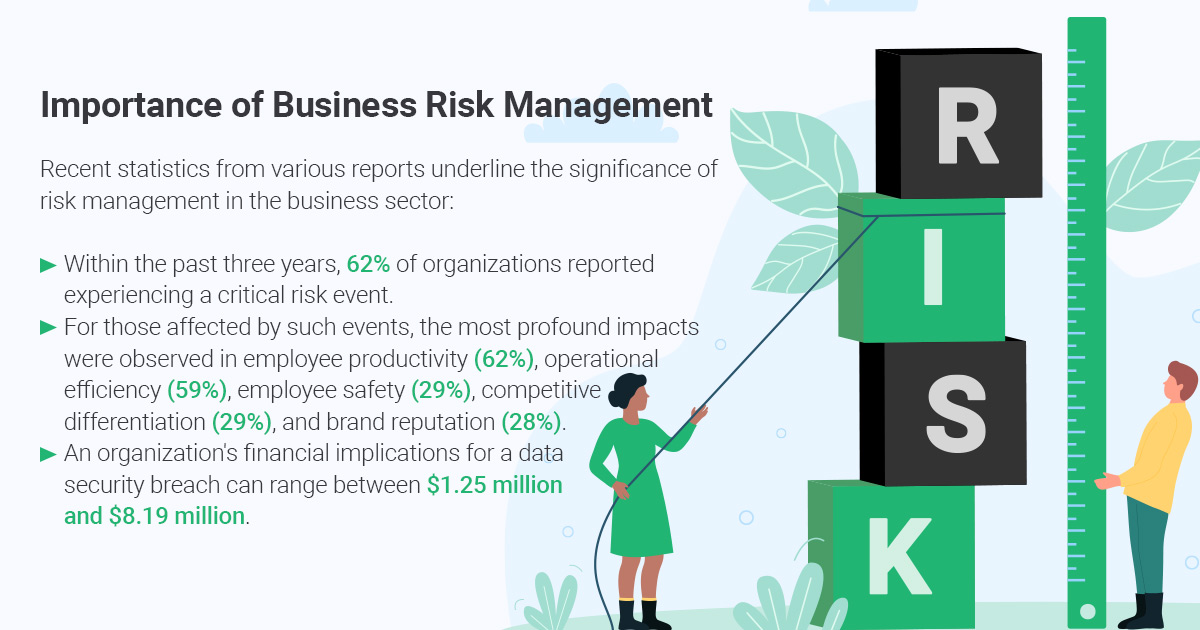How the Importance of Risk Management Shapes Strong Leadership
Wiki Article
The Crucial Significance of Risk Management in Achieving Organizational Goals
This is where Risk Management actions in, offering an organized strategy to identifying, assessing, and mitigating potential barricades to progress. As we discover the vital function of Risk Management in achieving business goals, one can't assist yet ask yourself: just how does this equate right into real-world success?Comprehending the Concept of Risk Management in Business

The Essential Duty of Risk Management in Strategic Planning
Incorporating Risk Management into calculated planning acts as a protect for organizations, anchoring their long-lasting plans with a solid structure of preparedness and strength. It operates as the organization's radar, detecting potential dangers and susceptabilities that might interfere with the path towards accomplishing their stated purposes. Risk Management offers a framework for expecting unpredictabilities and developing appropriate actions, ensuring the organization's survival and prosperity even when faced with misfortune. By including Risk Management right into strategic planning, organizations can transform these uncertainties into chances for development and technology. This strategic interweaving of Risk Management cultivates flexibility, making companies extra durable and allowing them to navigate the ever-changing organization landscape confidently. Risk Management ends up being an indispensable device in critical planning, important in protecting sustainable success.
Methods for Identifying, Assessing, and Focusing On Risks
Navigating the complicated landscape of dangers calls for the application of particular methods for their analysis, identification, and prioritization. The procedure begins with Risk recognition, employing devices such as SWOT evaluation, which helps in pinpointing prospective threats and possibilities. Next, Risk assessment is carried out to identify the potential impact and likelihood of each Risk. Devices such as Risk matrices and impact-probability graphes are utilized for this. Ultimately, dangers are focused on based on their possible effect and chance, enabling organizations to concentrate their resources on high-priority threats. This systematic strategy ensures a comprehensive understanding of the Risk landscape, enabling companies to make enlightened choices and effectively handle dangers to attain their goals - importance of risk management.Protecting Business Workflow With Efficient Risk Management
In the business landscape fraught with unpredictabilities, efficient Risk Management plays an essential role in securing organizational procedures. It offers as a protective shield, mitigating the negative impacts of prospective risks and making sure the smooth functioning of all processes. By determining and examining possible threats, Risk Management allows companies to develop durable contingency plans. This preventive strategy help in maintaining operational stability, also when informative post challenged with unexpected situations. In essence, Risk Management is the lifeline that keeps the business procedures afloat in the middle of unstable waters. It makes sure not read the article just the survival yet the lasting growth of a company, making it a crucial tool in attaining business purposes. Hence, organizations should spend in detailed Risk Management techniques to secure their operations.
Transforming Possible Risks to Opportunities: The Power of Risk Management
An aggressive approach to risk Management includes recognizing, assessing, and prioritizing dangers to develop methods that transform them into potential benefits. Thus, by leveraging the power of Risk Management, organizations can not just safeguard their operations however likewise stimulate development and attain their objectives in an unpredictable service atmosphere.Case Researches: Success Stories of Risk Management Driving Business Objectives
Successful implementation of Risk Management techniques has actually yielded excellent lead to various companies, highlighting the values of this strategy. Multinational companies like Microsoft and Google, for circumstances, have actually leveraged Risk Management to decrease dangers and make use of chances, driving their organization purposes onward. Microsoft's positive Risk Management method helped it pivot promptly during the 2020 pandemic, transitioning to remote job smoothly, consequently keeping performance. Google, by evaluating and reducing potential dangers in its cloud-based solutions, has guaranteed nonstop service, consequently strengthening consumer trust. These examples illustrate just how successful Risk Management can not only steer companies free from prospective challenges yet also guide them towards their critical purposes. Therefore, Risk Management is indispensable to the pursuit of business goals.
Conclusion
In conclusion, Risk Management is basically crucial in achieving organizational goals. It uses an organized internet approach to determining, assessing, and dealing with prospective threats and possibilities. Greater than simply mitigating threats, it additionally cultivates innovation, durability, and sustainable development. By integrating Risk Management right into strategic planning, companies can much better browse uncertainties, protect operations, and capitalise on chances, consequently lining up with lasting objectives.At its core, Risk Management is the process of recognizing, examining, and attending to possible threats that might negatively affect an organization's procedures or objectives. Next off, Risk evaluation is carried out to determine the potential influence and probability of each Risk. Threats are focused on based on their possible influence and possibility, enabling organizations to focus their sources on critical threats. By recognizing and examining potential risks, Risk Management makes it possible for companies to establish durable contingency strategies. A positive strategy to take the chance of Management involves recognizing, assessing, and prioritizing dangers to develop strategies that transform them into possible benefits.
Report this wiki page